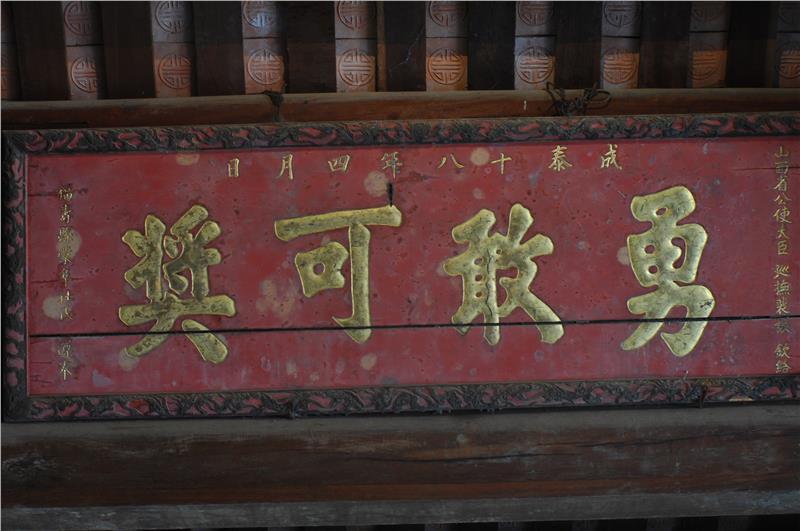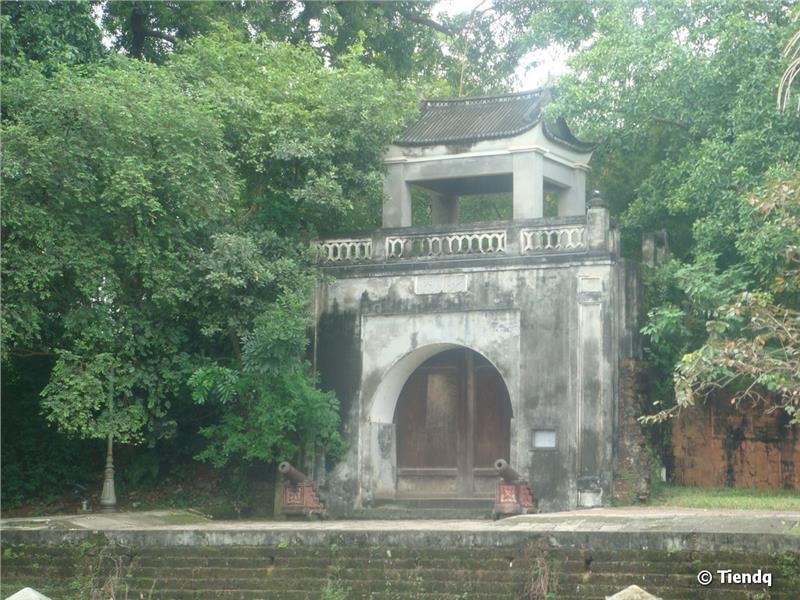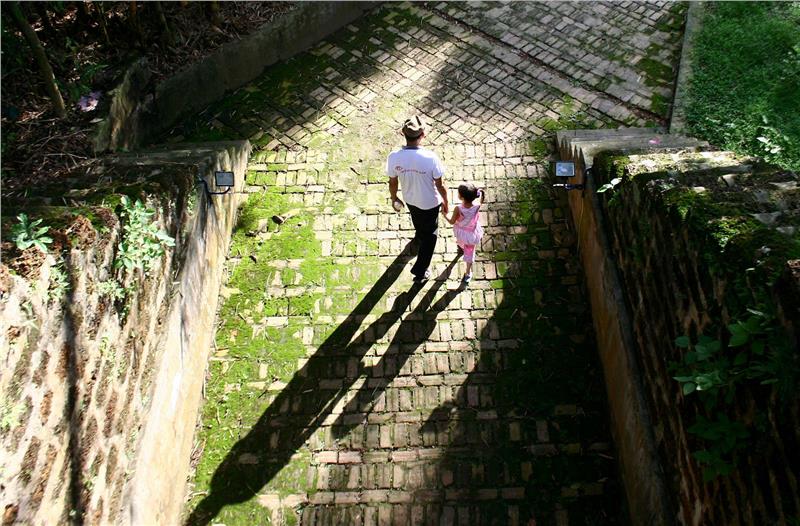About 42 km from the Hanoi City center to the west, Son Tay Ancient Capital is situated in the center of Son Tay town (used to be Ha Tay province), Hanoi. This is an ancient military architectural works built in the reign of King Minh Mang in 1822. Son Tay Ancient Citadel is a military building built of the laterite. The Citadel generally retains square-shaped structure of around 400m long each and 5m high. Like some ancient citadels in Hue and other regions, it was also constructed in Vauban architectural style (type of military buildings named after Vauban - a French engineer) with overall of 16 ha. The first impression that tourists easily feel in Son Tay Ancient Citadel is the image of ancient trees of hundreds of year old shading all year round. The scabrous roots embrace the mossy walls and ruined citadel gates, which creates an ancient beauty. It is the unique characteristic has turned the ancient citadel into one of most impressive tourist attractions in Hanoi.

The Citadel offers 4 main gates: Tien (Front) Gate in the south, Hau (Rear) in the north, Ta (Left) and Huu (Right) Gates. In particular, the Citadel is surrounded thanks to a moat 3m deep and 20m wide with full perimeter of about 2 kilometers. The Front Gate overlooks Quang Trung Street; meanwhile, the Rear one faces Le Loi Streets and straight to Red River. The Left Gate has a view of Nghe market, and the Right one looks on to Tran Hung Dao Street. All gates in the Citadel are designed in quadrilateral shape with a trapezoidal cross-section. Above gate offers a gazebo and only one entrance. The surface provides numerous porous positions in accordance with military architecture at that time.

Inside the Citadel, the buildings were constructed according to the symmetrical style on South - North center axis. In the center is Kinh Thien Palace, the getaway of the King and also the place for celebrating rituals. Kinh Thien Palace owns a relatively large space with glazed tile. Inside the palace are two round-shaped ironwood pillars with 0.5 meters in diameter painted cockroach wing color. The both sides provide round windows decorated with "longevity" letter in kanji. There is also a martial shrine in the west worshiping heroes who have sacrificed heroically in the fighting to defend the Citadel. At the 4 corners of the ancient citadel, there have existed four large square-shaped wells which are paved with laterite down to the bottom to provide water for the soldiers living. The buildings next to these wells are mansion, offices of the governors, the prison, and grain depots. Son Tay Ancient Citadel was built to administer a large area including half of the former Ha Tay province, entire Vinh Phuc province and nearly all of Phu Tho province. The Citadel is also responsible for controling and managing whole Northwest region, upstream of Red River, and basin of Lo River and Chay River. Together with Bac Ninh Citadel, it is considered the important pincer to protect Hanoi.

Not only is it impressive attraction of Hanoi tourism, Son Tay Ancient Citadel is also considered the most unique laterite citadel in Vietnam. Undergoing nearly 200 years with countless historical vicissitudes, Son Tay Ancient Citadel has still preserved citadel walls, Front Gate, Rear Gate, two cannons and numerous monuments such as gazebo, wells, Kinh Thien Palace... In 1994, Son Tay Ancient Citadel was recognized as a national architectural historic relic by Ministry of Culture. Though experiencing harsh times, the ancient citadel has been still majestic and antique expressing the stature of a glorious history of Vietnam nation. Along with numerous historical - cultural work items having been restoring and remodeling, Son Tay Ancient Citadel is increasingly attracting a large number of domestic and foreign tourists to visit and ascertain. It significantly contributes to promote a beautiful image of Hanoi travel to international friends.
